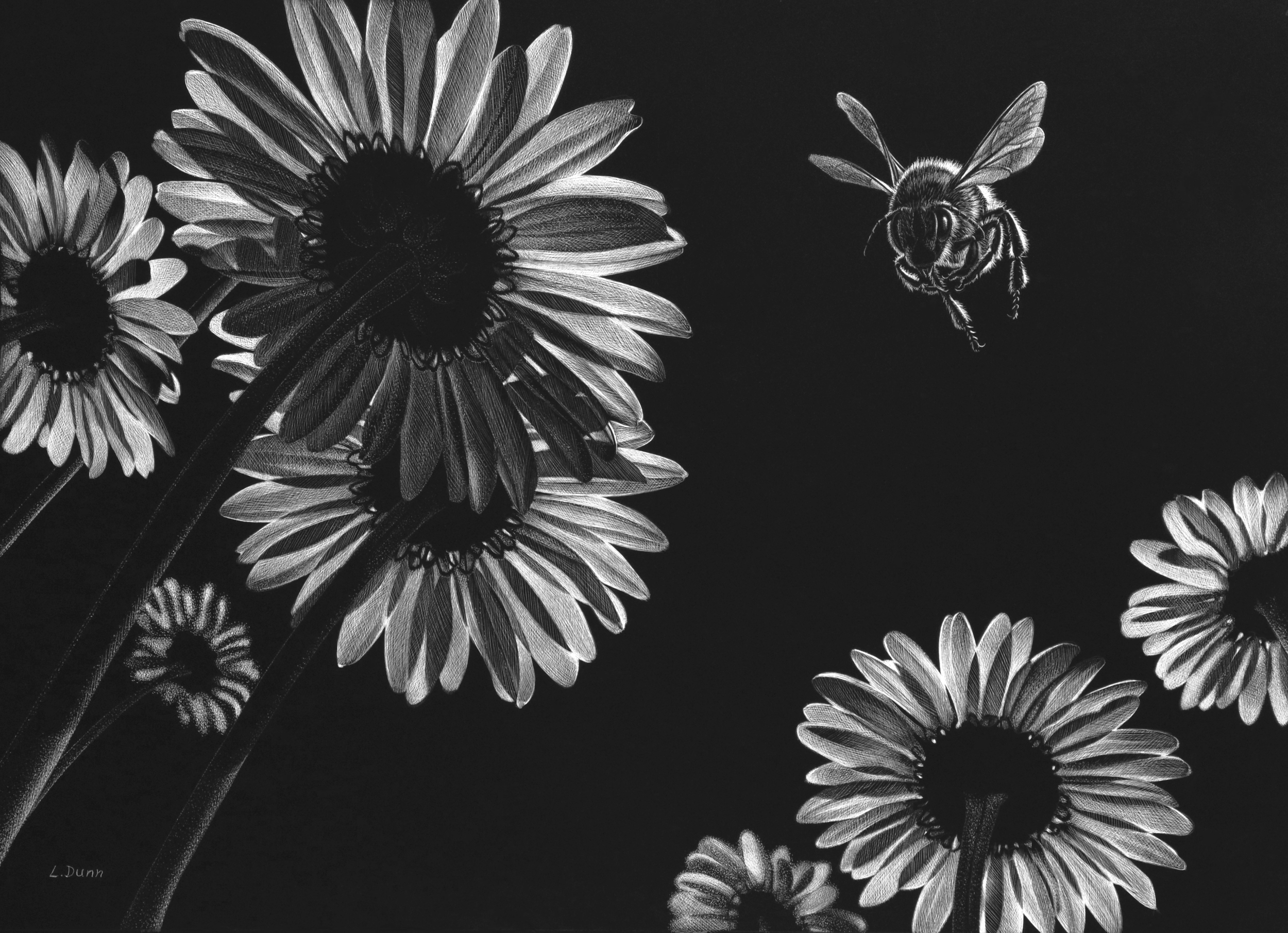LORI DUNN SCRATCHBOARD ART
promoting conservation through artistic efforts
Incoming
8 x 10
SOLD
The next time you are gardening and happen to see a honey bee, it might be worth reflecting on how important these insects are to your environment. Although the honey bee (Apis mellifera) is by no means the only pollinator of flowers, they are among the most robust of insect pollinators. For decades they have been colonized by humans, not only as a source of honey, but more recently, as an important agricultural tool in the pollination of large crops. Honey bees are now responsible for the pollination of roughly 1/3 of the produce we consume.
For the last century, beekeepers have noticed that colonies will occasionally suffer a die-off, or the workers will simply inexplicably disappear, leaving the queen alone. Since the 1970's these episodes have increased drastically, becoming alarming by the year 2006, with 30 -90% losses reported among apiculturists. At that time, scientists coined the term Colony Collapse Disorder (CCD) to give a name to this trend. Since then, researchers have been trying to determine a cause for CCD. So far, there is no clear "smoking gun", but a variety of factors have been isolated as potential causes.
The list includes; poor nutrition, mite infestation, viruses (and other pathogens), disruption of magnetic fields, climate change, and pesticide use. The latest research points to the use of neonic pesticides, such as neonicotiniods as a potential cause. These pesticides are systemic - applied to the seed of the crop they stay within the body of the plant, making their way to the nectar and pollen. While they have not been shown to kill bees outright, evidence indicates they have a significant effect on weakening their immune system. This can lead to secondary complications in the physiology of the honey bee as well as causing an increased susceptibility to pathogens. Further research is indicating that the adjuvants used to deliver neonics have the potential to be even more toxic than the pesticides themselves.
Many beekeepers believe more than one factor is at play here. They cite loss of native wildflower habitat (a bees natural food source) as a major problem also. Soy and corn flowers offer little nutrition for the bees. Native plants are required for proper health. As more bee colonies are developed for agricultural pollination, and more natural habitat is wiped out, suddenly there is not enough food to go around for the honey bees themselves. Combine poor nutrition with pesticide use and you potentially now have an immune suppressed colony that faces a downward spiral from which it cannot recover.
Most people agree that more science, study, and action is urgently needed to prevent further losses of this incredibly important insect. As individuals we can help. By planting native flowers that offer food to bees, and by preserving significant meadow and wildflower habitat, we can provide key nutrition not only for bees, but other insects and birds. As well, we can be aware and informed of the produce we consume - where it comes from, how it is grown, what chemicals are in use, etc. In doing so, we can potentially learn more about how these factors affect our own health, as well as our natural environment.
